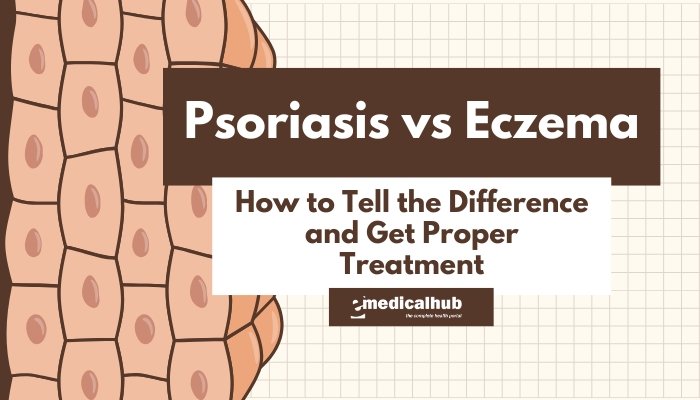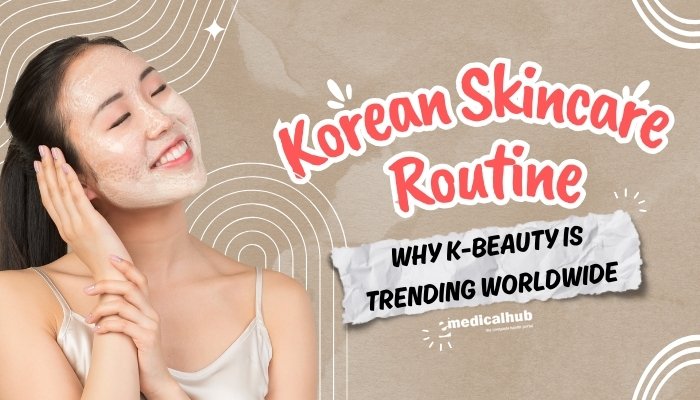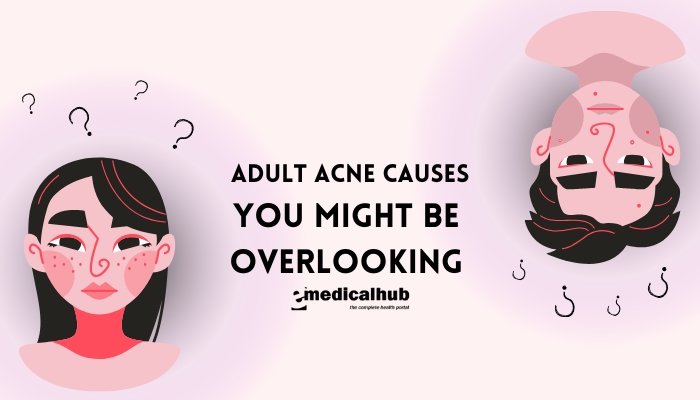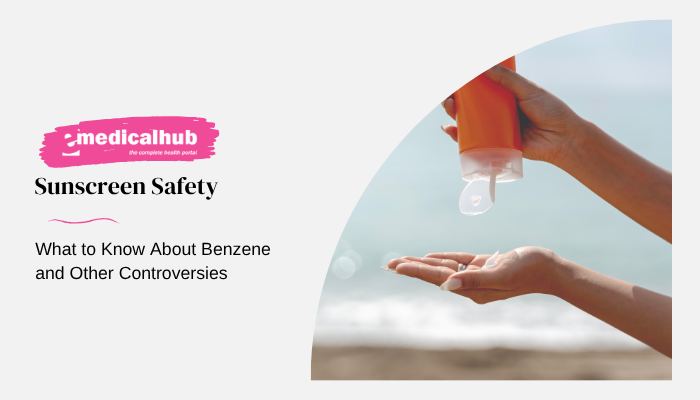Introduction
Psoriasis and eczema (atopic dermatitis) are two common but distinct inflammatory skin conditions that can greatly affect a person’s daily life. While they can share similar symptoms—like redness, itching, and patches of irritated skin—the underlying causes, appearance, and management can differ significantly.
Distinguishing between psoriasis and eczema is the first step toward effective treatment. Yet, because they sometimes overlap in presentation, many people find it challenging to determine which condition they have.
This article provides a detailed comparison of psoriasis and eczema, covering their root causes, hallmark symptoms, diagnostic criteria, and approaches to treatment. Knowing how these conditions differ helps patients and healthcare providers choose the most appropriate therapies and avoid exacerbating symptoms.
Ultimately, whether dealing with psoriasis or eczema, addressing triggers, safeguarding the skin’s barrier, and employing targeted medical interventions can improve comfort and quality of life.
Disclaimer: The content here is for general education and not a substitute for individualized medical advice. If you have persistent or severe skin symptoms, please consult a qualified healthcare professional or dermatologist for evaluation and treatment.
A Quick Overview of Psoriasis and Eczema
Psoriasis
Pathophysiology:
- An autoimmune disorder where the immune system speeds up the life cycle of skin cells, causing them to build up rapidly on the skin’s surface.
- Genetic predispositions and triggers (e.g., infections, stress, certain medications) lead to inflammation and accelerated cell turnover.
Hallmark Signs:
- Thick, scaly plaques with silvery-white buildup.
- Red patches often with well-defined borders.
- Common sites include the scalp, elbows, knees, and lower back.
- Can be associated with psoriatic arthritis (joint inflammation, pain, swelling).
Eczema (Atopic Dermatitis)
Pathophysiology:
- A chronic inflammatory skin condition influenced by genetic factors, immune dysregulation, and environmental triggers.
- Associated with a compromised skin barrier and heightened sensitivity to irritants or allergens.
Hallmark Signs:
- Intensely itchy, red, inflamed patches.
- Usually has indistinct borders; can appear “weepy” or oozy in acute flare-ups.
- Common in flexural areas (elbows, behind knees, wrists) and can occur anywhere.
- Ties to allergic rhinitis or asthma (the “atopic triad”) in some individuals.
Despite these general differences, overlaps can occur, and both can appear on various body parts. A dermatologist typically evaluates the appearance, distribution, and personal/family history to diagnose.
Key Differences in Appearance and Location
Plaques vs. Patches
- Psoriasis: Plaques are often thicker, with raised edges and pronounced scale. The scale can be silvery, easily flaking off if scraped, revealing pinpoint bleeding (Auspitz sign).
- Eczema: Lesions may be thinner, more diffuse, and extremely itchy. In acute eczema, the skin can weep or form small blisters.
Well-Defined vs. Blurred Edges
- Psoriasis: Frequently exhibits well-demarcated edges around plaques.
- Eczema: Often has less distinct borders, with red or inflamed areas blending into normal skin.
Body Distribution
- Psoriasis: Elbows, knees, scalp, and lower back are classic sites, but it can appear anywhere, including nails and joints (psoriatic arthritis).
- Eczema: Common in flexural areas (antecubital fossae, popliteal fossae), neck, and wrists. Infants often have it on the face or extensor surfaces.
Itch vs. Pain
- Psoriasis: Can be itchy, but many patients complain about thickness or dryness; some plaques can be painful or crack.
- Eczema: Tends to be extremely itchy, sometimes so intense that it disrupts sleep or leads to skin damage from scratching.
Causative Factors
Genetics
- Psoriasis: Strong heritable component; certain HLA gene variants correlate with disease susceptibility.
- Eczema: Also partly hereditary, linked to filaggrin gene mutations that compromise the skin barrier.
Immune System Dynamics
- Psoriasis: Primarily involves Th1, Th17 pathways, with cytokines like TNF-α, IL-17, IL-23 driving inflammation.
- Eczema: Th2-dominated inflammation, with cytokines like IL-4, IL-13 that hamper barrier function and encourage allergic responses.
Environmental and Lifestyle Triggers
- Stress
- Both conditions worsen under emotional stress.
- Climate
- Dry, cold weather may exacerbate dryness in eczema; some forms of psoriasis also worsen in winter.
- Irritants
- Harsh soaps, detergents, or chemicals can provoke eczematous flares.
- Infections
- For psoriasis, strep throat can precede guttate psoriasis. For eczema, skin infections (Staphylococcus aureus) can inflame or worsen flares.
- Allergens (more so in eczema, e.g., dust mites, pollen, pet dander).
Diagnosis: Clinical Examination and Tests
Dermatological Assessment
A dermatologist usually recognizes each condition by visual inspection and patient history. Important points:
- Onset Age: Eczema often starts in childhood (though adult-onset is possible). Psoriasis can develop at any age, often in young adulthood or between 50–60.
- Pattern and Chronicity: Recurrent episodes of scaly plaques vs. weepy or extremely itchy rashes.
- Associated Symptoms: Joint pain or nail changes indicate possible psoriatic arthritis; allergic triggers point to eczema.
Skin Biopsy
In ambiguous cases, a small skin sample may be analyzed histologically:
- Psoriasis: Thickened epidermis, elongated rete ridges, Munro’s microabscesses, etc.
- Eczema: Spongiosis (edema in the epidermis), infiltration of inflammatory cells.
Allergy Testing (Eczema)
Patch testing or allergen identification might clarify triggers. However, not everyone with atopic dermatitis has specific allergies.
Therapeutic Approaches for Psoriasis
Topical Treatments
- Topical Corticosteroids
- First-line for mild to moderate plaques. Vary in potency. Long-term usage can cause thinning, striae.
- Vitamin D Analogues (e.g., Calcipotriene)
- Normalizes skin cell growth and used alone or with steroids.
- Topical Retinoids (Tazarotene)
- Helps reduce plaque thickness, used in combination therapy.
- Coal Tar
- Traditional approach, can reduce scaling, though modern usage is less frequent due to smell and messiness.
Phototherapy
- Narrowband UVB: A standard for widespread psoriasis. Typically 2–3 sessions/week for several weeks.
- PUVA (psoralen + UVA) or excimer laser for localized lesions.
Systemic and Biologic Medications
- Traditional Systemics
- Methotrexate: Reduces inflammation, can have hepatic or hematologic side effects.
- Cyclosporine: Potent immunosuppressant, used short-term for severe flares.
- Acitretin: A retinoid for chronic plaque psoriasis, but not immunosuppressive.
- Biologics
- TNF inhibitors (e.g., adalimumab, etanercept, infliximab).
- IL-12/23 inhibitors (ustekinumab).
- IL-17 inhibitors (secukinumab, ixekizumab).
- IL-23 inhibitors (guselkumab, tildrakizumab).
- Revolutionized treatment, targeting specific immune pathways for moderate to severe cases.
Lifestyle Considerations
Stress management, weight control, and avoiding alcohol or smoking can modulate disease severity. Support from mental health professionals or patient groups helps address psychosocial challenges.
Therapeutic Approaches for Eczema
Maintaining Skin Barrier
- Moisturizers: Fundamental to eczema care, ideally used at least twice daily to prevent dryness and transepidermal water loss.
- Gentle Cleansing: Mild, soap-free cleansers, avoiding overbathing in hot water which strips lipids.
Topical Medications
- Topical Steroids
- Cornerstone therapy for acute flares. Choose potency based on lesion severity and site (mild potency for face).
- Topical Calcineurin Inhibitors (tacrolimus, pimecrolimus)
- Useful in sensitive skin areas (face, folds). Less risk of skin thinning than steroids.
- Topical PDE4 Inhibitors (crisaborole)
- For mild to moderate eczema; helps reduce inflammation.
Phototherapy
Similar to psoriasis, narrowband UVB can help moderate to severe eczema patients who don’t respond well to topicals alone.
Systemic Treatments
- Oral Steroids
- Reserved for severe flares or short-term usage due to side effects.
- Immunosuppressants
- Cyclosporine, Methotrexate, Azathioprine, Mycophenolate mofetil used for refractory cases.
- Biologic Treatments
- Dupilumab: An IL-4/IL-13 inhibitor, greatly improving moderate-severe atopic dermatitis.
- JAK Inhibitors (e.g., upadacitinib, abrocitinib) indicated for severe, treatment-resistant eczema.
Managing Triggers
- Allergen and Irritant Avoidance
- Identifying triggers like dust mites, pet dander, or harsh detergents.
- Stress Reduction
- Stress can fuel flares. Relaxation methods, counseling if needed.
Overlapping Treatments and Confusions
Steroids and Phototherapy
Used in both psoriasis and eczema, but the approach might vary. For instance, high-potency steroids are used more aggressively in psoriasis plaque areas, whereas eczematous lesions might need carefully chosen milder potency for sensitive body sites.
Biologics Expanding
- Dupilumab revolutionized severe atopic dermatitis. For psoriasis, a broad range of biologics exist targeting different cytokines. Cross-therapy usage is sometimes considered if patients have overlap syndromes (rare but possible).
Addressing Both Conditions in One Individual
Some individuals might simultaneously have psoriasiform eczema or conditions that mimic each other. Detailed assessment, possibly including biopsy, is crucial. A dermatologist might refine the plan with two sets of therapies that carefully integrate, or a single regimen if one disease is more active.
Lifestyle Tips Beneficial for Both Conditions
- Hydration
- Drinking sufficient water, using adequate moisturizers.
- Gentle Skin Care
- Avoid harsh exfoliants; opt for fragrance-free, hypoallergenic products.
- Stress Management
- High stress correlates with flares in both diseases. Techniques like mindfulness, yoga, or therapy.
- Dietary Balance
- While no universal “miracle diet,” some evidence suggests anti-inflammatory diets (rich in fruits, vegetables, omega-3s) can help. Keep a symptom journal to identify potential triggers.
- Sunlight
- Controlled exposure to natural sunlight can help mild psoriasis or eczema, but avoid burns; always weigh the risk of UV damage.
Misconceptions
- “Only kids get eczema; only older adults get psoriasis.”
- Eczema often begins in childhood, but adult-onset is possible. Psoriasis can manifest at any age, including childhood.
- “Both diseases are contagious.”
- Neither psoriasis nor eczema is contagious. You cannot “catch” them from someone else.
- “Diet alone can cure them.”
- While certain diets may help reduce inflammation or triggers, no specialized diet cures these conditions entirely.
- “Scrubbing vigorously will remove patches.”
- This aggravates the lesions. Gentle cleansing is necessary.
Coping and Psychosocial Support
Both eczema and psoriasis can cause visible plaques, dryness, and often itching that disrupts daily life. Some patients struggle with social embarrassment, depression, or anxiety.
Strategies
- Support Groups: Online or local groups to share experiences and practical tips.
- Counseling: Professional help if mental health is impacted. Chronic conditions can strain relationships, work, or self-image.
- Resources from Foundations: Organizations like the National Psoriasis Foundation, National Eczema Association supply educational materials and connect patients to clinical trials or advocates.
FAQ
- Can stress alone cause psoriasis or eczema?
Stress does not directly “cause” these conditions—genetics and immune factors do—but it can trigger or worsen flares in predisposed individuals. - Do these conditions go into remission spontaneously?
Both can have periods of remission and flare-ups. Some people experience near-complete clearing for months or years, only to have recurrences later. - Can I use the same lotion for both eczema and psoriasis?
Basic, fragrance-free moisturizers are beneficial for both. However, specific medical treatments differ. A single basic moisturizer doesn’t treat underlying inflammation but helps support the skin barrier. - How do I know if I need biologics?
Biologics are typically considered for moderate-to-severe cases that don’t respond to topicals or phototherapy. A dermatologist will evaluate disease severity, impact on life, and comorbidities. - Will tanning beds help either condition?
Healthcare professionals discourage tanning beds due to skin cancer risks. Medical phototherapy (narrowband UVB) is safer and better supervised.
When to See a Specialist
- Moderate to Severe Disease: If over-the-counter or initial treatments fail to control widespread or severe symptoms, it’s time to consult a dermatologist.
- Suspected Misdiagnosis: If uncertain whether lesions are psoriasis, eczema, or something else, a specialist can confirm diagnosis.
- Persistent Itching: Debilitating pruritus that affects sleep or daily function warrants medical evaluation for advanced therapies.
- Signs of Infection: If patches become warm, oozing, or develop pustules, immediate care is needed.
- Sudden Worsening or Spread: Rapid changes may indicate new triggers or unrecognized factors.
Conclusion
Although psoriasis and eczema share some superficial characteristics—like red, inflamed, and itchy skin—knowing their distinct markers, triggers, and treatments is crucial for relief. Psoriasis is more autoimmune-based, with thick scaly plaques and well-defined borders, whereas eczema typically presents as intensely itchy, patchy inflammation driven by barrier dysfunction and allergic tendencies. Dermatologists differentiate these conditions through clinical examination and, if needed, biopsy.
Luckily, modern medicine has made strides in controlling and even putting these conditions into remission. From topical therapies and phototherapy to advanced biologics, patients have more options than ever for relief. Lifestyle measures—like stress management, consistent moisturizing, and avoiding harsh irritants—can complement medical care. Additionally, staying connected to support networks and seeking help early can prevent complications, scarring, or emotional distress.
If you’re dealing with persistent or unclear skin issues, consult with a dermatologist to obtain a definitive diagnosis and an optimal, personalized treatment plan. By proactively addressing symptoms and triggers, you can pursue clearer skin, less discomfort, and a better quality of life.
References
- Griffiths CE, Barker JN. Pathogenesis and clinical features of psoriasis. Lancet. 2007;370(9583):263-71.
- Weidinger S, Novak N. Atopic dermatitis. Lancet. 2016;387(10023):1109-22.
- Rendon A, Schäkel K. Psoriasis pathogenesis and treatment. Int J Mol Sci. 2019;20(6):1475.
- Langan SM, Irvine AD, Weidinger S. Atopic dermatitis. Lancet. 2020;396(10247):345-60.
- https://www.psoriasis.org
- Eichenfield LF, et al. Guidelines of care for the management of atopic dermatitis. J Am Acad Dermatol. 2014;70(2):338-51.
- Parisi R, et al. Global epidemiology of psoriasis. J Invest Dermatol. 2013;133(2):377-85.
- Rangel SM, Parolin MB, Caputo LGC. Dermatopathological correlation between psoriasis and atopic dermatitis. An Bras Dermatol. 2020;95(4):481-489.
- Silverberg JI, et al. Dupilumab in moderate-to-severe atopic dermatitis. J Am Acad Dermatol. 2021;84(1):143-152.
- Menter A, Korman NJ, Elmets CA, et al. Guidelines of care for the management of psoriasis and psoriatic arthritis. J Am Acad Dermatol. 2019;80(4):1029-1072.
- Katayama I, Watanabe S, et al. IL-4 and IL-13 in psoriasis and atopic dermatitis. Immunol Rev. 2021;299(1):237-249.
- Awadalla F, Rosenbaum DA, Adams BB, et al. Tanning and risk of nonmelanoma skin cancer. Dermatol Surg. 2020;46(1):69-75.





